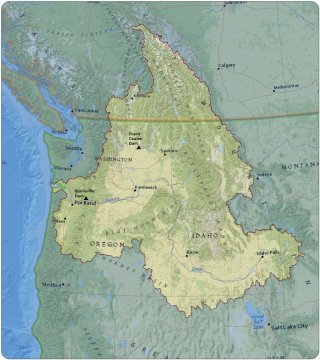EPA's role in protecting the Columbia River Basin

Columbia River Basin Restoration Program
Congress amended the Clean Water Act in 2016 by adding Section 123, which required the EPA to establish a Columbia River Basin Restoration Program.
It was the first legislation to officially designate the national importance of restoring the Columbia River Basin – one of our nation’s largest watersheds. The legislation focuses on the U.S. portion of the Basin, including the states of Oregon, Washington, Idaho, and Montana.
Section 123 authorized the EPA to establish the Columbia River Basin Restoration Working Group with representatives of states, Tribal governments, industry, and other entities.
Section 123 also directed the EPA to develop the Columbia River Basin Restoration Funding Assistance Program – a voluntary, competitive grants program for environmental protection and restoration programs throughout the Basin. The legislation provided a framework for future funding of toxic reduction, monitoring, and outreach actions.
EPA is committed to coordinating with Tribal, state, federal and other partners, as well as other regional Columbia River Basin restoration work efforts to implement the Columbia River Basin Restoration Act.
- 2022 Columbia River Basin Restoration Program Update (pdf)
- 2019 Columbia River Basin Restoration Program Update (pdf)
National Estuary Program
The EPA's National Estuary Program is a non-regulatory program established by Congress in 1987 under the Clean Water Act to pioneer a broad and innovative approach to respond to threats to estuaries. It operates through partnerships among the EPA and other federal, state, and local organizations, industry, academia, environmental and business groups, and community residents.
There are 28 local National Estuary Programs (NEPs), each with a director and staff, working with local stakeholders to improve the health of the waters, habitats, and living resources of their estuaries. The EPA provides annual funding, national guidance and technical assistance to the local NEPs.
Learn more about the EPA's National Estuary Program.
Lower Columbia Estuary Partnership

The Lower Columbia Estuary Partnership was established in 1995 and is one of the 28 National Estuary Programs that protect and restore an estuary of national significance.
The Lower Columbia Estuary Partnership is a 501(c)3 non-profit corporation that works along the lower 146 miles of the Columbia River from Bonneville Dam to the Pacific Ocean.
It is a collaborative program led by farmers, educators, businesses and economic interests, conservation groups, citizens, state governments, federal agencies, and Tribal governments to restore and protect habitat, improve water quality, advance science, and provide information about the river to a range of audiences.
Visit Lower Columbia River Estuary Partnership to learn more about their work.
About the Columbia River Basin

The Columbia River Basin is one of the nation's largest watersheds – covering more than 260,000 square miles and providing drainage for hundreds of rivers, creeks, and streams.
The Columbia River flows over 1,200 miles from its source in the Canadian Rockies to the Pacific Ocean. It's the second largest river in the United States by volume of water flow, behind only the Mississippi River.
The watershed provides an important backdrop for urban development, agriculture, transportation, recreation, fisheries, and hydropower in western North America. The Tribal people of the region have depended on it for food, trade, cultural and spiritual use for thousands of years.
But heavy use has also caused significant declines in water quality in some areas, putting human health at risk and threatening the survival of salmon and other species.
